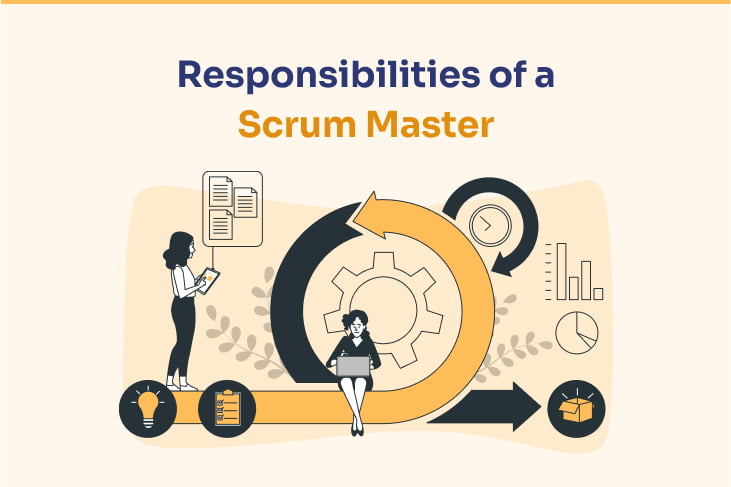Introduction to Scrum
Roles
- Product Owner: Represents the stakeholders and is responsible for maximizing the value of the product.
- Scrum Master: Facilitates the Scrum process, removes obstacles, and ensures the team adheres to Scrum practices.
- Development Team: Cross-functional group responsible for delivering increments of work during each sprin
Artifacts
- Product Backlog: A prioritized list of all desired work on the project.
- Sprint Backlog: The subset of items from the product backlog selected for the sprint.
- Increment: The sum of all the completed product backlog items at the end of a sprint.
Events
- Sprint Planning: Meeting at the beginning of each sprint where the team selects items from the product backlog to work on.
- Daily meet: Brief daily meetings for the team to synchronize activities and identify any obstacles.
- Sprint Review: Meeting at the end of the sprint where the team demonstrates the completed work to stakeholders.
- Sprint Retrospective: Meeting at the end of the sprint where the team reflects on its process and identifies areas for improvement.
Thus, Scrum emphasizes collaboration, flexibility, and continuous improvement, allowing teams to adapt to changing requirements and deliver high-quality products efficiently.
Responsibilities of a Scrum Master

What does a Scrum Master do? The Scrum Master responsibilities are as follows:
- The Scrum leader is in charge of making sure that all Scrum-related activities are efficiently planned and carried out. This includes sprint planning, sprint reviews, sprint retrospectives, etc. Furthermore, they lead the team through difficult situations, making sure they maintain their composure, stay on course, and follow their guidelines.
- One of the main duties is to locate and remove barriers or roadblocks that impede the team’s development. This might entail resolving problems with dependencies, communication, resources, or any other element that could make it more difficult for the team to produce value.
- They facilitate effective communication within the team, as well as between the team and external stakeholders.
- Furthermore, they track the team’s progress toward their Sprint goals and overall project objectives.
- They encourage a culture of continuous improvement within the team, seeking feedback and opportunities to enhance their processes and practices.
Skills to Look in a Scrum Master
It’s critical to search for applicants with a blend of technical proficiency, people skills, and leadership attributes when recruiting a Scrum Master. Here are some essential abilities and qualities to think about:
- Scrum masters must be to be well knowledgeable about the roles, methods, and guiding principles of the Scrum framework. Furthermore, they should be able to lead the team in putting Scrum methodology into practice and use Scrum principles in an effective manner.
- Communication is critical for a Scrum Master to facilitate collaboration within the team and communicate with stakeholders effectively. They should be able to articulate ideas clearly, actively listen to others, and foster open and transparent communication
- Moreover, they should prioritize the needs of the team before their own, exhibiting the values of servant leadership. Thus, they ought to be sympathetic, encouraging, and dedicated to making the team successful.
- They must possess the skills necessary to recognize and remove roadblocks or hurdles that can impede the team’s development. Thus, they should take the initiative to overcome obstacles and come up with original answers to challenging issues.
- Additionally, they should be able to coach and mentor team members to improve their Agile practices and collaboration.
- Furthermore, agile environments are dynamic and often require quick adaptation to changing requirements and priorities. Thus, they should be flexible and adaptable, able to adjust plans as needed to support the team and achieve project goals.
- Conflict may arise within the team or with stakeholders. Thus, they should be skilled in managing and resolving conflicts constructively.
- Agile methodologies and practices are constantly evolving, and a good master should be committed to continuous learning and improvement. Thus, they should stay updated on the latest trends, best practices, and certifications in Agile and Scrum.
Conclusion
In a nutshell, the function of a Scrum Master is essential to guaranteeing that the Scrum framework is successfully applied inside a group or company.
Their leadership abilities and proficiency with agile approaches enable them to lead teams through the iterative process, promote collaboration, remove barriers, and cultivate a continuous improvement culture.
In today’s fast-paced corporate world, they are essential in assisting teams in producing high-quality products quickly by living up to the values of servant leadership and being flexible.

